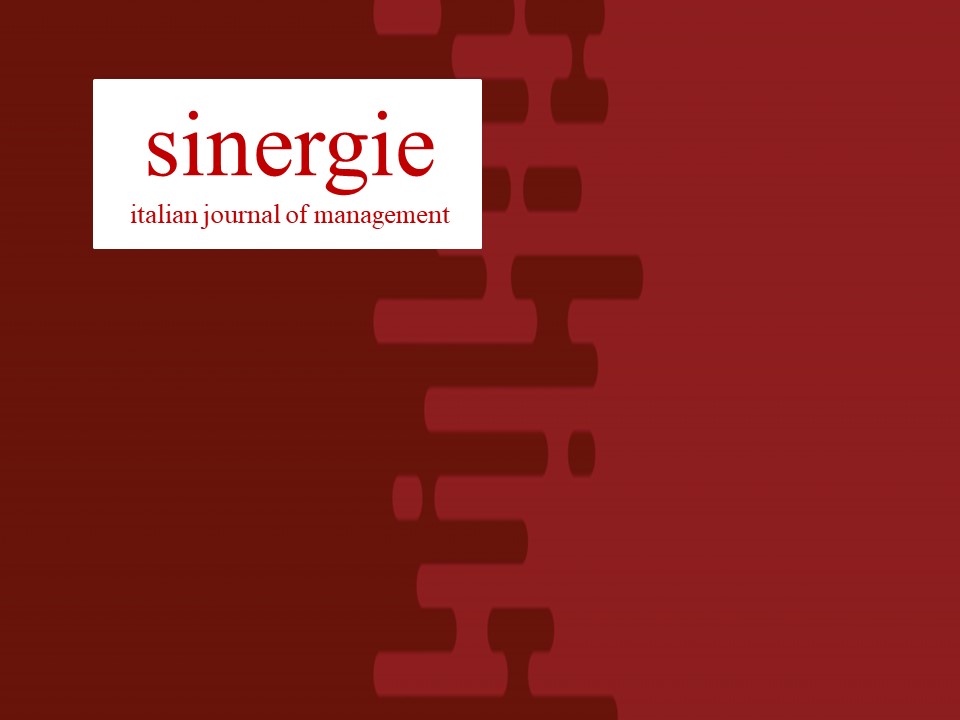The financial unsustainability of the Italian public health care system
Purpose of the paper: Health and sustainability have become an almost indissoluble unity of analysis in all advanced health care systems. We ask the research question if the Italian enduring recession will affect the economic and financial sustainability of Government health financing in the period 2014-2018.
Methodology: We have adapted the theoretical framework of economic and financial health care sustainability introduced by the WHO in 2009 to an economy suffering from an enduring recession and stagflation, with data obtained from the Italian Document of Economy and Finance 2011 and 2014 and the International Monetary Fund.
Findings: We found that the Document of Economy and Finance 2014: 1) has significantly reduced the fraction of GDP allocated to public health financing (6.98%; 95% CI 6.80-7.21) with respect to the previous Document of Economy and Finance 2011 (6.98%; 95% CI 6.80-7.21) at a confidence level of p < 0.05 with t = 4.4285, df = 11.978 and p-value = 0.0008269; 2) has increased the fraction of GDP allocated to non-health financing; 3) has based its spending forecasts on a growing GDP , contrary to all forecasts made by the IMF. Within the analytical framework utilized, this implies that the Italian Government health financing is both economically and financially unsustainable.
Research limitations: This approach encounters some limits as the dynamic uncertainty of a socioeconomic downturn and an aging population could induce a complete modification of health care financing from public to a mixture of public and insured private.
Riferimenti bibliografici
BACKMAN G., HUNT P., KHOSLA R., JARAMILLO-STROUSS C., MEKURIA FIKRE B., RUMBLE C., PEVALIN D., ACURIO PA?EZ D., ARMIJOS PINEDA M., FRISANCHO A., TARCO D., MOTLAGH M., FARCASANU D., VLADESCU C. (2008), Health systems and the right to health: an assessment of 194 countries, Lancet, vol. 372, n. 9655, pp. 2047-85.
BANK FOR INTERNATIONAL SETTLEMENTS (2011), Detailed tables on preliminary locational and consolidated banking statistics at end-June 2011, This publication is available on the BIS website only (www.bis.org). Accessed on: Oct 24, 2014.
BLOOMBERG (2014), Most efficient health care 2014, Available at: http://www.bloomberg.com/visual-data/best-and-worst/ Accessed on: Oct 24, 2014
CESANA G. (2005), Il Ministero della Salute, Societ Editrice Fiorentina, Firenze.
CHERNEW M., HIRTH R.A., CUTLER D.M. (2009), Increased Spending on Health Care: Long-Term Implications for the Nation, Health Affairs, vol. 28, n. 5, pp. 1253-55.
CHUNLING LU, SCHNEIDER M.T., GUBBINS P., LEACH-KEMON K., JAMISON D., MURRAY C. JL (2010), Public financing of health in developing countries: a cross-national systematic analysis, Lancet, vol. 375, n. 9723, pp. 1375-87.
COADY D., CLEMENTS B.J., GUPTA S. (2012), The Economics of Public Health Care Reform in Advanced and Emerging Economies, International Monetary Fund Publications Services, Washington DC, USA, ISBN/ISSN: 9781616352448.
CROFT A.M., PALMER J.V. (2012), Exercise and life expectancy, Lancet, vol. 379, n. 9818, p. 800.
EUROPEAN CENTRAL BANK (2014), Fiscal policies: Excessive deficit procedure, Available at: http://www.ecb.europa.eu/mopo/eaec/fiscal/html/index.en.html Accessed: May 22.
GRUEN R.L., ELLIOTT J.H., NOLAN M.L., LAWTON P.D., PARKHILL A., MCLAREN C.J., LAVIS J.N. (2008), Sustainability science: an integrated approach for health-programme planning, Lancet, vol. 372, n. 9649, pp. 1579-89.
INTERNATIONAL MONETARY FUND (1993), System of National Accounts 1993, Inter-Secretariat Working Group on National Accounts, International Monetary Fund Publications Services, Washington DC, USA.
INTERNATIONAL MONETARY FUND (2011), Slowing Growth, Rising Risks, World Economic Outlook (WEO), Available at: http://www.imf.org/external/pubs/ft/weo/2011/02/index.htm, Accessed: September 22, 2014.
ISTAT (2014), Preliminary estimate of GDP, Available at: http://www.istat.it/en/archive/122150 Accessed May 22, 2014.
KAPLAN JP. (2009), Towards a common definition of global health, Lancet, vol. 373, n. 9679, pp. 1993-95.
KENNEALLY M., WALSHE V. (2012), Pharmaceutical cost-containment policies and sustainability: recent Irish experience, Value Health, vol. 15, n. 2, Mar-Apr, pp. 389-93.
MAIO V., MANZOLI L. (2002), The Italian Health Care System: W.H.O. Ranking Versus Public Perception, P&T, vol. 27 n. 6, pp. 301-8.
MANZOLI L., VILLARI P., BOCCIA A. (2008), Epidemiologia e Management in Sanit: Elementi di Metodologia, Edi Ermes, Milano.
MINISTERO DELLECONOMIA E DELLE FINANZE (2011), Documento di Economia e Finanza 2011, Ministero dellEconomia e delle Finanze, Roma, Available at: http://www.mef.gov.it/doc-finanza-pubblica/def/ Accessed May 22.
MINISTERO DELLECONOMIA E DELLE FINANZE (2014), Documento di Economia e Finanza 2014, Ministero dellEconomia e delle Finanze, Roma, Available at http://www.mef.gov.it/doc-finanza-pubblica/def/ Accessed May 22.
OECD (2006), Projecting OECD health and long-term care expenditures: what are the main drivers?, Economic Department Papers, vol. 477, Paris.
OECD (2011), OECD Economic Surveys: Italy 2011, OECD Publishing, Paris.
OECD (2013), OECD Health Data 2013, Paris.
OECD (2014), Central Government Debt, Available at: http://stats.oecd.org/Index.aspx?DataSetCode=GOV_DEBT# Accessed May 22, 2014.
OLGIATI S., DANOVI A., LANZARINI A., CESANA G. (2012), Sustainability of universal health coverage in Italy: a modelling study, Lancet, vol. 380, Special Issue, S18, 21 October 2012, DOI: http://dx.doi.org/10.1016/S0140-6736(13)60304-9.
OLGIATI S., DANOVI A. (2012), The Financial Framework of the Sustainability of Health Universal Coverage in Italy. A Quantitative Financial Model for the Assessment of the Italian Stability and Reform Program of Public Health Financing, Cornell University Library ArXiv 207.6278. Available at http://arxiv.org/abs/1207.6278. Accessed May 22
ORSZAG P.R., EMMANUEL E.J. (2010), Health Care Reform and Cost Control, N Engl J Med, vol. 363, n. 7, pp. 601-3.
PAGANO A., VITTADINI G. (2004), Qualit e Valutazione delle Strutture Sanitarie, Etas, Milano.
PENG RD. (2009), Reproducible research and Biostatistics, Biostatistics, vol. 10, n. 3, pp. 405-408.
PORTER M.E. (2009), A strategy for health care reform – Toward a value-based system, N Engl J Med, vol. 10.1056.
GRUEN R.L., ELLIOTT J.H., NOLAN M.L., LAWTON P.D., PARKHILL A., MCLAREN C.J., LAVIS J.N. (2008), Sustainability science: an integrated approach for health-programme planning, Lancet, vol. 372, pp. 1579-89.
SHIBUYA K., HASHIMOTO H., IKEGAMI N., NISHI A., TANIMOTO T., MIYATA H., TAKEMI K., REICH MR. (2011), Future of Japans system of good health at low cost with equity: beyond universal coverage, Lancet, vol. 378, n. 9798, pp. 1265-73.
SPANDONARO F., RAFANIELLO A. (2002), Sistemi di finanziamento del Servizio Sanitario Nazionale e impatti redistributivi, Convegno Nazionale AIES, vol. 25727, Edited by Facolt di Economia Universit di Bologna, Bologna.
SPECTOR P. (2014), Using t-tests in R. UC Berkley. Department of Statistics. Statistics 133. Available at: http://statistics.berkeley.edu/computing/r-t-tests Accessed May 22.
TAMIYA N., NOGUCHI H., NISHI A., REICH M.R., IKEGAMI N., HASHIMOTO H., SHIBUYA K., KAWACHI I., CREIGHTON CAMPBELL J. (2011), Population aging and wellbeing: lessons from Japans long-term care insurance policy, Lancet, vol. 378, n. 9797, pp. 1183-92.
THOMSON S., FOUBISTER T., MOSSIALOS E. (2009), Financing Health Care in the European Union, Edited by European Observatory on Health Systems and Policies Studies Series, n. 17, World Health Organization, Brussels.
WORLD BANK (2014), Debt, Available at: http://datatopics.worldbank.org/debt/ Accessed: October 22, 2014.
WORLD HEALTH ORGANIZATION (WHO) (2000), The World Health Report 2000. Health Systems Improving Performance, Available at: http://www.who.int/whr/2000/en/whr00_en.pdf . Accessed May 22, 2014.


